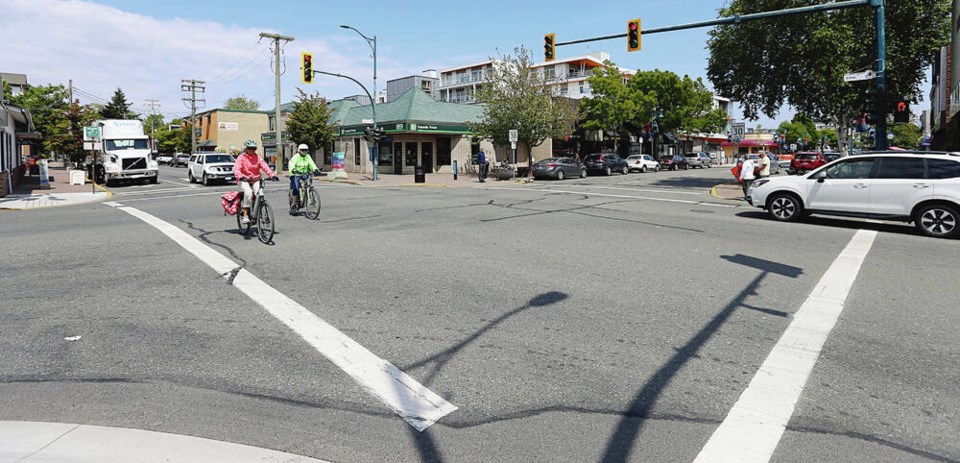Intersections are particularly dangerous places to drive through lately. It’s logical that when two roads intersect the prospect for collision rises substantially. What makes things more dangerous is that most times one vehicle has an advantage over the other one.
When a vehicle is struck on one of its sides by the front end of another vehicle it has a few things working against it. Structurally being hit from the side means there is less protection for a driver or passenger because the other vehicle has the protection of its engine, its engine compartment, dashboard and airbags. Doors, window glass and some structural panels are all that is protecting a person inside a vehicle struck on its side.
Side curtain airbags and modern construction standards have greatly improved the chances for the side struck vehicle, but it’s still a mismatch compared to the vehicle which strikes front on.
Other factors at play, of course, are pedestrians, motorcyclists and bicycles. As I’ve written about many times, they are no match for a vehicle, particularly when a large vehicle, like a 4X4, an SUV or a commercial vehicle is involved. About 25% of all pedestrian road deaths occur at intersections.
Intersections, in whatever form they take — traffic lights or not — require the most attention you can give in a driving situation. There are several tips you should bear in mind as you approach an intersection.
You should slow down, even on a green. It doesn’t have to be drastic but your foot should ease off the gas pedal and “hover” between it and the brake pedal. That half second increase in your response time can make all the difference when someone blows a red light or turns left in front of you.
A fresh green light is pretty much the same as a red light in terms of your safety. This is especially true at night when incidents of intoxication and carelessness rise.
Ignore the temptation to cruise on through a fresh green light. Instead, slow down slightly and deliberately scan left and right for cars blowing through the opposing red. It is especially important to watch when a large semi trailer has gone across in front of you. Often drivers will be following that rig too closely and in doing so have blocked their own view of the light which has just turned red for them.
The same thinking applies to starting out from a fresh green. No blasting off. Instead conduct a quick right and left check to ensure opposing traffic is actually stopping. Pay attention to that second lane of cross traffic which may be hidden behind a bus or a semi-truck.
Following too closely at intersections causes a lot of crashes. In fact, the rear end collision is probably the most common factor in accidents around or in an intersection.
It’s much better to slow down early and cruise to a smooth stop as you approach a red light, especially when there’s other traffic in front. Waiting to the last minute before applying the brakes can mean more damage in a crash but it also takes away reaction time. A bit more reaction time means you could stop safely but also allows for swerving out of the way if that becomes necessary.
Keeping distance from the car in front is a basic driving rule but it also applies when starting out on a green light at an intersection. Giving yourself that bit of extra space is important when that pedestrian, cyclist or red light runner makes the car in front of you brake suddenly — a common occurrence in this region.
Yellow lights are every bit as important as red lights. Running either one carries the same fine and penalty points. A yellow light means you must stop unless you can’t do it safely. Yellows don’t mean speed it up a bit because it’s not red yet or as long as I’m driving safely I can cruise on through. They mean stop — unless it’s unsafe.
What’s unsafe? It could be someone is tailgating you. It could mean the roads are wet or slippery and that sudden braking would cause you to enter into a skid. But in the vast majority of instances a vehicle traveling at the proper speed can easily stop for yellow lights.
Always signal around intersections, give pedestrians their right of way, and pay extra attention to large vehicles, like buses, which need extra room to make turns.
Remember that a stop sign just doesn’t mean “Stop.” It also means after coming to a halt you yield to other vehicles having the right of way before you go.
By thinking that there is always a potential for conflict at an intersection you definitely increase your chances of getting through safely.



